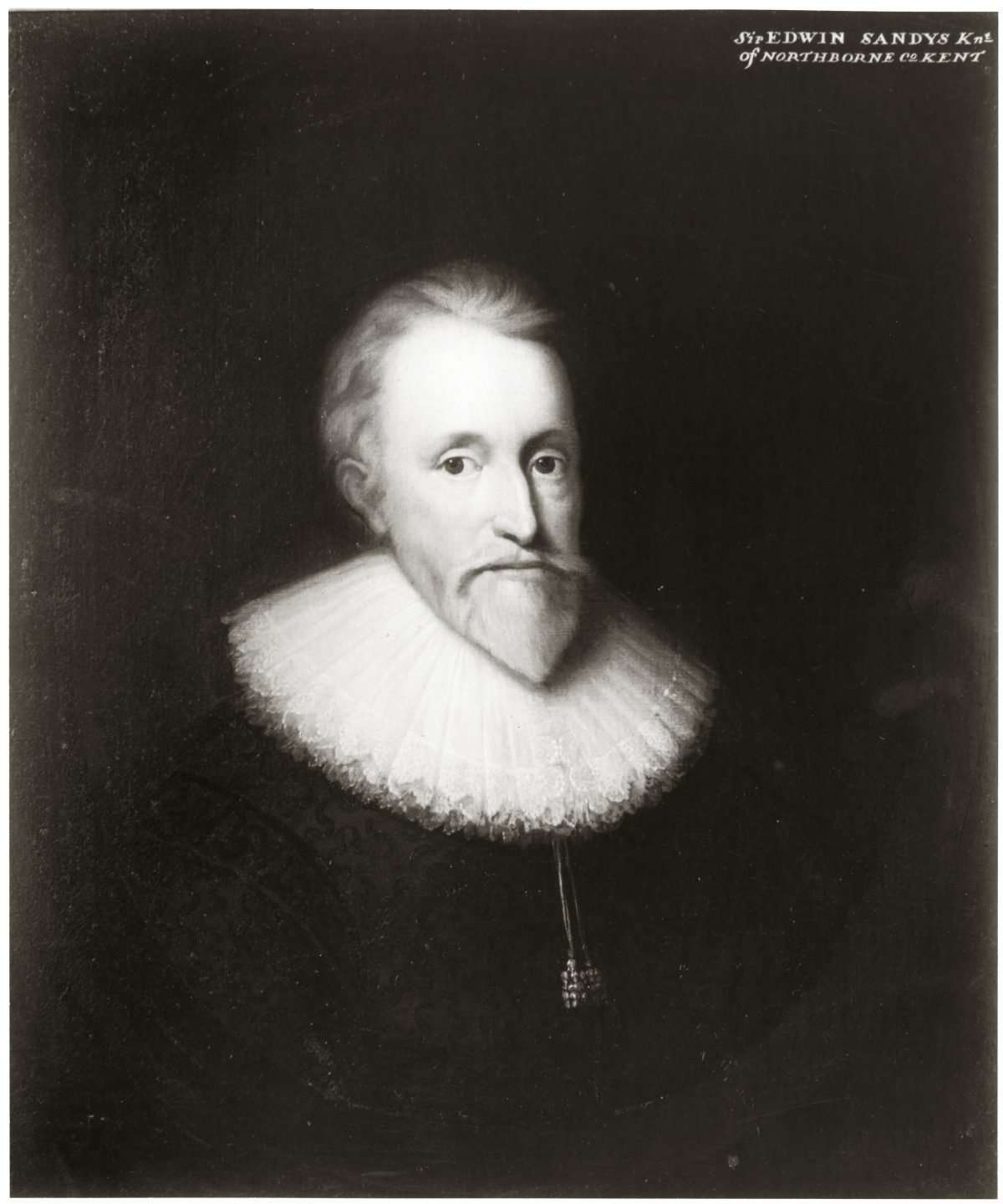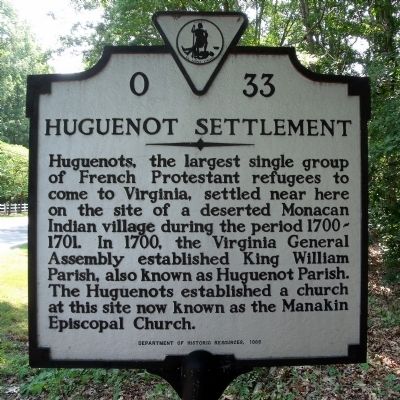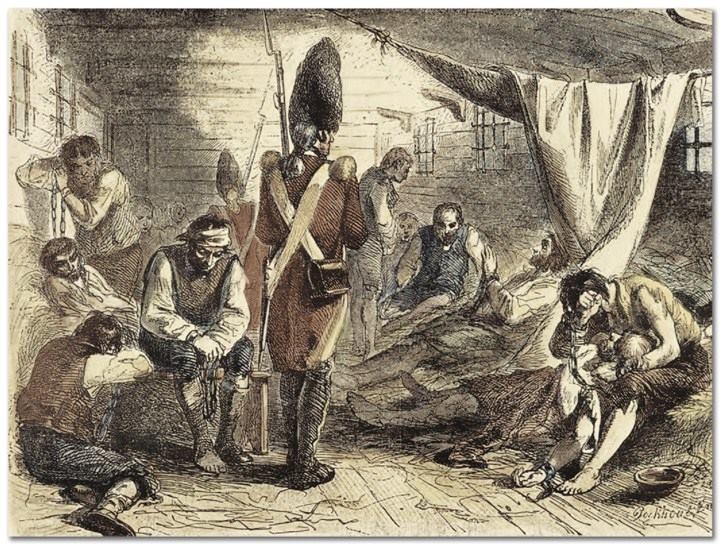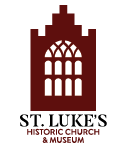Sending the women and children ahead of the men, Huguenots endured the terror of getting caught while leaving France. The penalty of such an act would result in a galley sentence or imprisonment. Many were willing to face the risk in order to continue their faith.1 References of Huguenot migration to the New World regularly coincide with the Great Migration following 1685 and the revocation of the Edict of Nantes. Approximately 180,000 French women and men fled to England, the Netherlands, and the New World.2 By the mid 17th century a settlement of industrious French immigrants thrived in the English silk trade. By the first quarter of the 18th century, an estimated 50,000 Huguenots lived in England with 31 established churches, and a hospital on Threadneedle Street in the Spitalfields neighborhood.3 While Huguenots successfully brought their trade to England, they fell short in establishing the silk trade in Colonial Virginia.
Although several Huguenots remained in England, some continued their migration to Virginia shortly after the establishment of Jamestown. In 1619 the Virginia Company sent eight men, French vignerons from Languedoc, into the colony for the sole purpose of growing vines and producing silk.4,5 Among these eight men, Jacques Bonoeil was selected for his expertise. He wrote the first manual in the colony for wine growing.6 These instructions had little impact because the Virginia planters focused on growing tobacco.7 Yet repeated emphasis from the Virginia Company on the urge to diversify the economy continued throughout the next decade.
Reports from John Smith had both private investors of the Virginia Company and the Crown idealized the birth of wine and silk trade after native mulberry trees necessary for silkworms were surveyed on the Eastern Shore.8 An advocate for the expansion of the colony, Sir Edwin Sandys was elected Virginia Company Treasurer in 1619.9 Sandys also joined Nicholas Maritau, an established Huguenot in Virginia, in recruiting Frenchmen to procure the silk trade in Virginia.10 Sandys was a proponent of the Protestant faith and wrote A Relation on the State of Religion centered on religious tolerance.11 During Sandys’s administration, Edward Bennett, a Puritan, established Warrosquyoake Shire which later became the site of the first Anglican Church in Isle of Wight, a predecessor to St. Luke’s Historic Church.12 An investor in the silk trade like his brother, George Sandys joined the Virginia Company in 1621. Later, George patented 650 acres of land on the lower part of the James River (present day Surry County) which became known as Treasurer’s Plantation. 13 A muster from 1625 indicates 16 men and 1 woman including Frenchmen skilled in wine and silk making on his plantation. Buildings on site included two houses, two storehouses, a silk-worm house and some other cabins.14 Despite these efforts, Virginia Company records indicate that the Frenchmen of Languedoc were dissatisfied with Sandys. The original terms in their agreement regarding provisions and accommodations were not met.15 George Sandys spent most of his time not on this patented land but in a newly fashioned blockhouse in Jamestown.16 While the Virginia Assemblymen were enthusiastic about recruiting French into the colony, the hierarchy of the English planters and Assembly men over the laborers was clearly defined.
The continued optimism for the silk trade in Virginia was not as clearly shared by the French. Apart from a few exceptions, most Huguenots in Virginia likely arrived as indentured servants from England. The 1625 census mentions Frenchmen settled at Buckroe near Elizabeth City, Martin’s Hundred, Indian Thicket, James City, and Warnicke Squeak.17 In regard to the vignerons, the Virginia Company promised compensation and supplies in exchange for their labor and expertise.18 The Company raised concerns that the “times [of the Frenchmen sent for] do shortly expire” and efforts to see to their permanence were underway.19 George Sandys lamented the fact that he could not encourage more interest in silk growing at his plantation.20 Before the revocation of the Edict of Nantes, Huguenots leaving France often had intentions of re-establishing themselves in France after the conflicts ended.21 It’s possible they were not as committed as the English hoped. Also accounts from the seventeenth century call the Company’s end of the contract into question. In Edward Williams’s 1650 account, Virginia: Richly and Truly Valued, the silk production may have been successful had the Company not broken its promise and if “those contracted as hired servants for employment…” had not been “compelled to labour in the quality of slaves.”22 However accurate Williams’s account is, the Assembly had no qualms in charging the French when the industry failed to launch.
Early Assembly Acts involving silk production included stipulations for all free colonists; yet, over time the responsibility for the failure of the industry fell on the French. In 1619, the Assembly passed an act requiring all landowners to plant six of the mulberry trees by 1626.23 Then In 1624 the Assembly passed an act requiring every freeman to set a quarter of an acre of ground for planting corn and make a garden for vines, herbs, roots, and mulberry trees.24 Yet in 1628, the Assembly reported that the vignerons sent over didn’t understand the business of silk or spent time of little purpose.25 In 1632, the Assembly passed an act which noted that the Frenchmen who had been sent over ten years ago had failed in their endeavor.26 It restrained them from planting tobacco or forfeit their leases and face imprisonment.27 Not only did the Assembly place blame on the vignerons, but it also controlled the land they lived on, the crops grown, and penalized those who didn’t obey.
The failures of the French to procure the silk industry as controlled by Virginia leadership in the 1620s were not that far apart from the failures of the Manakin Settlement up the James River some 80-100 years later. Confusion over leadership and the division of land, which was not suited for tobacco growth and expansion, left the Huguenots ill prepared for their environment.28 Many resorted to assimilation and intermarriage with the Virginians for survival. Culturally, the Virginians absorbed the Huguenots.29
Unlike the more radical Puritans or Presbyterians, the Huguenots that settled in Virginia embraced religious tolerance within Protestantism. They were more accepting of the Anglican Church practices, promoting a uniform Protestant faith against Catholicism.30, 31 While the Huguenots’ acceptance of the English and Virginians certainly played a role, the hierarchy of the social class undoubtedly had a hand in their assimilation. Even though some wealthy Frenchmen were noted in Colonial Virginia, few held power in the new colony already well defined by a strong planter class. The Huguenots were faced with an unfamiliar environment and against a well established planter class with a monopoly of control on tobacco. The Huguenot experience in Virginia illustrates the complex issues surrounding the founding of the colony: the religious and political freedoms bestowed upon a select few.
Footnotes:
1) “Sentenced to the Galleys,” Musee Protestant, accessed August 2023, museeprotestant.org.
2) “The Huguenot Refuge,” Musée protestant, accessed August 2023, museeprotestant.org.
3) “Huguenots,” The History of London, accessed August 2023, www.thehistoryoflondon.co.uk.
4) A Note for the Shipping, Men, and Provisions sent and Provided for Virginia 1620” The Records of the Virginia Company of London III, 240, Library of Congress accessed August 2023, www.loc.gov.
5) William Waller Henning, The Statutes at Large: Being a Collection of all the Laws of Virginia from the first (session of the Legislature in the year 1619: Published pursuant to an Act of the General Assembly of Virginia, Passed the 5th Day of February One Thousand Eight Hundred and Eight, : Volume I [-XIII] ( New York:Printed for the Editor by R. &G. & W. Bartowe, 1823),136.
6) Thomas Pinney, A History of Wine in America: From the Beginnings to Prohibition ( Berkeley: University of California Press, 1989),16.
7) Ibid, 17.
8) Charles E. Hatch, Jr., “Mulberry Trees and Silkworms: Sericulture in Early Virginia,” The Virginia Magazine of History and Biography 65, no. 1 (Jan 1957): 5.
9) “The Headright System in Colonial America 1618-1779,” American History Central, accessed August 2023, americanhistorycentral.com. In addition to introducing the first General Assembly, Sandys’s charter established the Headright System which led to the first enslaved African women and men in the colony.
10) John Baer Stoudt, Nicholas Martiau, the adventurous Huguenot, the military Engineer, and the earliest American ancestor of George Washington (Norristown, PA :The Norristown, Press, 1944), 7-8, 31. Ancestor to George Washington, Nicholas, Martiau was granted naturalization through proclamation and enjoyed the same privileges as the Virginia planters with the right to own property and land. In 1632 Martiau served as a member of the House of Burgesses from the Isle of Kent.
11) Andrew Thrush, et al,“Sandys, Sir Edwin[1561-1629] of Northbourne Court, Northbourne, Kent and St. Martin-le-Grand, Aldersgate, London; formerly of Dalby, Yorks, and the Middle Temple, London,”The History of Parliament: the House of Commons 1604-1629, 2010, Cambridge of University Press, accessed August 2023, historyofparliamentonline.org. Though not a radical himself, Sandys was sympathetic to the Brownists and Barrowists for their support against his political opponent, Thomas Smyth in England.
12) John Fiske, Old Virginia and her Neighbors I (New York: Houghton and Mifflin, 1897), 302
13) Martha W. McCartney, Virginia Immigrants and Adventurers 1607-1635; A Biographical Dictionary (Baltimore, MD: Genealogical Publishing Company, 2007), 41.
14) Ibid.McCartney also references the muster including 15 men and 2 women including Italian Glassblowers from Jamestown.
15) VA Co. records III ref by Hatch, “Mulberry Trees and Silkworms,” p. 16.
16) Ibid, 20.
17) Ibid, 21.
18) “September 11, 1621 Letter to the Governor and Council,” Records of the Virginia Company Vol. III,. 457
19) Hatch,”20.
20) Ibid,19.
21) Roger Howell, Jr., “The Vocation of the Lord: Aspects of the Huguenot Contribution to the English Speaking World,” Anglican and Episcopal History 56, no. 2 (Jan 1987): 13.
22) Edward Wiliams, Virginia: More Especially the South Part Thereof, Richly and Truly Valued (London: T.H, 1650) “First Hand Accounts,” accessed August 2023, Virtual Jamestown.org.
23) Hatch, 38.
24) Henning, Statutes at Large, 126
25) Ibid, 136.
26) Ibid, 161. Assembly Report from 1632; Lee Pelham Cotton, “Silk Production in the 17th Century,” Historic Jamestowne Part of Colonial National Historical Park, accessed August 2023,nps.gov. The main reason for the failure of industry was the surge of tobacco growth in Virginia. Even with the Stuart Kings restrictions, planters were able to negotiate more favorable terms and tobacco thrived as a cash crop for Virginia outpacing the slow maturation of the trees, silkworms, and the production of silk.
27) Henning, Statutes at Large,16
28) James L. Buggs, Jr., “The French Huguenot Frontier Settlement of Manakin Town” The Virginia Magazine of History and Biography 61, no. 4 (October 1953):379.
29) Ibid, 39.
30) David George Mullen,, “A Hotter sort of Protestantism?: Comparisons between French and Scottish Calvanists,” The Sixteenth Century Journal 39, no. 1 (Spring 2008): 45.
31) Robert M. Kingon, “Why did the Huguenot Refugees in America Colonies Become Episcopalian,” Historical Magazine of the Protestant Episcopal Church 49, no. 4 (Dec 1980):329.
Sources:
A Note for the Shipping, Men, and Provisions sent and Provided for Virginia 1620.” The Records of the Virginia Company of London III, 240. Library of Congress. accessed August 2023. www.loc.gov.“September 11, 1621 Letter to the Governor and Council.”
Buggs, James L., Jr. “The French Huguenot Frontier Settlement of Manakin Town.” The Virginia Magazine of History and Biography, 61, no. 4 (October 1953):359-394.
Cotton, Lee Pellham. “Silk Production in the 17th Century.” Historic Jamestowne Part of Colonial National Historical Park. accessed August 2023. nps.gov.
Fiske, John. Old Virginia and her Neighbors I. New York: Houghton and Mifflin, 1897.
Hatch, Charles E., Jr. “Mulberry Trees and Silkworms: Sericulture in Early Virginia.” The Virginia Magazine of History and Biography, 65, no. 1 (Jan 1957): 3-61.
Henning, William Waller. The Statutes at Large: Being a Collection of all the Laws of Virginia from the first (session of the Legislature in the year 1619: Published pursuant to an Act of the General Assembly of Virginia, Passed the 5th Day of February One Thousand Eight Hundred and Eight, : Volume I [-XIII]. New York:Printed for the Editor by R. &G. & W. Bartowe, 1823.
Howell, Roger Jr. “The Vocation of the Lord: Aspects of the Huguenot Contribution to the English Speaking World.” Anglican and Episcopal History 56, n.2 (Jan 1987): 133-151.
“Huguenots.” The History of London. accessed August 2023. www.thehistoryoflondon.co.uk.
Kingon, Robert M. “Why did the Huguenot Refugees in America Colonies Become Episcopalian.” Historical Magazine of the Protestant Episcopal Church, 49., no. 4 (Dec 1980): 317-335..
McCartney, Martha W. Virginia Immigrants and Adventurers 1607-1635; A Biographical Dictionary. Baltimore, MD: Genealogical Publishing Company, 2007.
Mullen, David George. “A Hotter sort of Protestantism?: Comparisons between French and Scottish Calvanists.” The Sixteenth Century Journal, 39, no. 1 (Spring 2008): 45-69.
Pinney, Thomas. A History of Wine in America: From the Beginnings to Prohibition. Berkeley: University of California Press, 1989.
“Sentenced to the Galleys.” Musee Protestant. accessed August 2023. Musee Protestant.org.“The Huguenot Refuge.”
Stoudt, John Baer. Nicholas Martiau, the adventurous Huguenot, the military Engineer, and the earliest American ancestor of George Washington. Norristown, PA:The Norristown, Press, 1944.
“The Headright System in Colonial America 1618-1779.” American History Central. accessed August 2003. Americanhistorycentral.com.
Thrush, Andrew, et al. “Sandys, Sir Edwin[1561-1629] of Northbourne Court, Northbourne, Kent and St. Martin-le-Grand, Aldersgate, London; formerly of Dalby, Yorks, and the Middle Temple, London.”The History of Parliament: the House of Commons 1604-1629, 2010. Cambridge of University Press. accessed August 2023. historyofparliamentonline.org.
Wiliams, Edwards. Virginia: More Especially the South Part Thereof, Richly and Truly Valued. London: T.H, 1650. “First Hand Accounts.” accessed August 2023. Virtual Jamestown.org

Above: Sir Edwin Sandys, a founder of the VA Company who encouraged French Huguenots to settle in Virginia.

Above: Historic Sign of Huguenot Settlement.

Above: French Huguenots. Four ships arrived at the mouth of the James River and the Rappahannock, east of present-day Richmond Virginia. French Huguenots, having fled religious persecution, had lived in England and performed services for the King. They were granted lands for a permanent home in the New World where they had the freedom to worship as they pleased.
Enjoy this article? Please consider supporting St. Luke’s with a donation!

About the Author
Joanna Braswell holds a Master of Arts degree in American Studies with a concentration in Historic Preservation from The George Washington University and a Bachelor of Arts degree in Historic Preservation and a concentration in French from the University of Mary Washington in Fredericksburg. Promoting public history, she served Preservation Virginia’s Bacon’s Castle as Site Coordinator; the 1750 Isle of Wight County Courthouse Board; and historic preservation departments at the federal, state, and local levels as well as volunteering for Historic St. Luke’s Church and Museum. Currently Joanna, her husband, and three daughters live in Morehead City, North Carolina where she’s an Interventionist Assistant for Carteret County Schools. Joanna has a passion for Early American and Virginia History.
